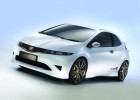
With advancements in technology, the automotive industry has seen a shift towards more environmentally-friendly vehicles. While traditional internal combustion engines (ICEs) have been the standard for decades, hybrid engines are becoming increasingly popular. In this article, we’ll compare how a traditional car engine works versus a hybrid engine, specifically on BMW models, and explore the technical details of each.
Internal Combustion Engine (ICE)
An ICE works by burning a mixture of air and fuel inside a combustion chamber, which produces energy to power the vehicle. There are four strokes that occur in an ICE: intake, compression, power, and exhaust. During the intake stroke, the fuel mixture is drawn into the combustion chamber through the intake valve. In the compression stroke, the mixture is compressed by the piston. In the power stroke, the spark plug ignites the mixture, causing an explosion that pushes the piston down, generating energy. Finally, in the exhaust stroke, the spent gases are expelled through the exhaust valve.
BMW ICE engines are known for their efficiency and power output. For example, the BMW 3 Series is powered by a 2.0-liter turbocharged four-cylinder engine that can produce up to 255 horsepower and 295 lb-ft of torque. While this is impressive, ICEs are not as environmentally-friendly as hybrid engines.
Hybrid Engine
A hybrid engine combines an ICE with an electric motor to achieve greater fuel efficiency and reduce emissions. The BMW hybrid engine uses a lithium-ion battery to power the electric motor, which is connected to the transmission. When the car is idling, the electric motor provides power, while the ICE takes over when more power is needed.
There are two types of BMW hybrid engines: mild-hybrid and plug-in hybrid. A mild-hybrid system uses the electric motor to assist the ICE, while a plug-in hybrid can operate solely on electric power for short distances. The BMW 530e, for example, is a plug-in hybrid that can travel up to 21 miles on electric power alone, before the ICE kicks in.
The BMW hybrid engine also uses regenerative braking to recharge the battery. When the driver brakes, the electric motor acts as a generator, converting kinetic energy into electrical energy to recharge the battery.
The BMW hybrid engine delivers impressive fuel efficiency, with the 330e plug-in hybrid achieving up to 75 miles per gallon equivalent (MPGe) in electric mode and 28 MPG on gasoline alone.
Conclusion
In summary, while a traditional ICE engine is powerful and efficient, it’s not as environmentally-friendly as a hybrid engine. BMW’s hybrid engines use a combination of an ICE and an electric motor to achieve greater fuel efficiency and reduce emissions. The two types of BMW hybrid engines, mild-hybrid and plug-in hybrid, offer different levels of electric power and range. By choosing a BMW hybrid model, drivers can enjoy the power and performance of an ICE while also reducing their carbon footprint.




















